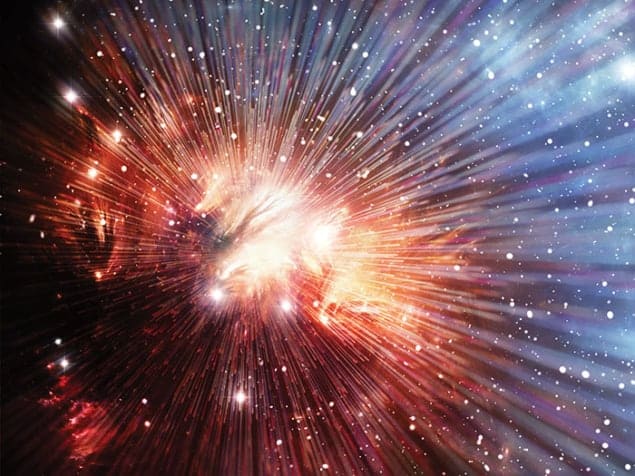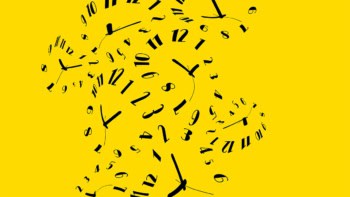James Millen reviews Spooky Action at a Distance: the Phenomenon That Reimagines Space and Time – and What It Means for Black Holes, the Big Bang and Theories of Everything by George Musser

Wolfgang Pauli, the Austrian-born pioneer of quantum physics, is best known for two things. One is the vastly important Pauli exclusion principle, which explains the periodic table and the mechanical, electrical and optical properties of solids. The other is the “Pauli effect”: whenever Pauli entered a lab, normally reliable equipment failed. Of course, the Pauli effect is an anecdotal phenomenon, and was considered humorous by many of his colleagues. Pauli himself, however, did not consider it mere chance, and believed it to be a sign of the underlying synchronicity of nature. Indeed, he corresponded regularly with the psychologist Carl Jung about this belief. Thinking deeply about quantum physics can, it seems, greatly broaden your view of what is explicable, real and intuitive.
George Musser’s book Spooky Action at a Distance focuses on one of quantum physics’ more challenging concepts, nonlocality, and its multitude of implications, particularly its assault on space itself. To most people familiar with the word, including physicists, nonlocality is the idea that separate entities can affect each other instantaneously over any distance – that prodding an atom on the other side of the universe could make one in a lab here on Earth jump. It is usually encountered in discussions of quantum entanglement. However, the idea of nonlocality (and hostility towards it) has a surprisingly long history and reach.
Musser, a journalist and contributing editor to Scientific American, does an entertaining job in tracing this history of nonlocality in science and philosophy, from the ancient Greeks to today. One real strength of the book is making one aware that nonlocality is not an issue purely for quantum physicists. Newton’s concept of gravity, for example, is fundamentally nonlocal; every particle in the universe affects every other instantaneously and with nothing tangible passing in-between. Newton only embarked on this programme of study as a result of his interest in magic, and his work was viewed with great suspicion by his contemporaries. Following suit, Einstein coined the phrase “spooky action a distance” when discussing the phenomenon.
A large portion of the book is dedicated to the struggle Einstein had in accepting the existence of nonlocality, and his debates with Bohr. There is a great deal of discussion of various interpretations of quantum physics and how they deal with nonlocality, from parallel universes to the all-pervasive guiding waves proposed by David Bohm. Surprisingly little space, by comparison, is dedicated to the relationship between nonlocality and realism (the idea that there are real particles with real properties before you measure them), as famously encoded in the inequalities of the Belfast-born theorist John Bell. In the words of the Austrian experimental physicist Anton Zeilinger, “Locality is not the problem.” Instead, he tells Musser, “In my eyes the main culprit is realism.”
But quantum physics is not the only area of physics battling with the issue of nonlocality. Throughout the book, whenever we think we have climbed to some level of understanding, black holes are invoked to knock us off our perch, with their seemingly bottomless ability to warp our concepts of space and time. Another subject explored is the possibility that the uniformity of the universe is not a coincidence, but rather a sign that everything was nonlocally linked at the earliest stages of time, leading to similarities that persist today.
Nonlocality is therefore much more than just spooky action at a distance, and for me the most powerful aspect of the book’s narrative was explaining the concept of separability. This is the idea that objects separated in space are separate objects, which may seem like a tautology, but the properties of quantum entanglement really seem to suggest that distant particles need not lead distinct lives. The book uses the fact that single objects can exist in many places as a reason to radically reassess the concept of space. As the cosmologist Sean Carroll puts it in Musser’s book, “Space is totally overrated… space [is] totally bogus. Space is just an approximation that we find useful in certain circumstances.”
The book later moves on to quantum field theory, and the fact that its integral ingredient – Einstein’s fundamentally local theory of relativity – ironically leads to vast levels of nonlocality. The author compellingly paints pictures of quantum fields correlating distant events, while carefully steering us away from thinking of 3D space, particles and waves. In fact, it may well be these correlations that define the meaning of space. As Musser puts it, “When we first encountered entanglement, it seemed to transcend space. Today, physicists think it might be what creates space.”
This is a compelling idea: that space as we experience it is not fundamental, but rather emerges from something deeper. Space may be defined by the interactions, interrelations and organization between objects (the wittily titled “quantum graphity”), or through the structure of cause and effect (causal set theory). Sadly, at this point the book becomes rather jumbled, and one is barraged with an ever-increasing array of these emergent theories, glossed over so fast as to only confuse rather than inform. We have matrix model string theory, AdS/CFT holographic theory, noncommutative geometry, twistor theory… even the people working on it seem overwhelmed. “Everyone who has thought about [nonlocality] goes through phases of excitement and depression,” says Hans Halvorson of Princeton University, adding “I’m feeling a bit depressed now.” Theorist Fotini Markopoulou-Kalamara says she felt “more discouraged than encouraged” and has left physics for industrial design. It’s hard not to feel the same exasperation when faced with such an avalanche of theories.
The journalistic style of this book is smooth and pleasing, rich with personal interviews that touch on the inner workings of researchers, and vignettes from contributors’ lives to add colour. Musser is a witty writer (he describes wave–particle duality as being akin to a vegan butcher); however, sometimes he over-extends his metaphors, particularly in comparing complex physical situations to complex emotions. He several times directly compares entanglement and love, and suggests that physical contact can lead to entanglement. Incorrect statements, though, are few and far between, especially considering the scope of this book. As an experimental physicist, I certainly learned a lot, and am armed with new visual metaphors and fresh insight into an often perplexing field.
- 2015 Scientific American/Farrar, Straus and Giroux £18.49/$27.00hb 304pp



